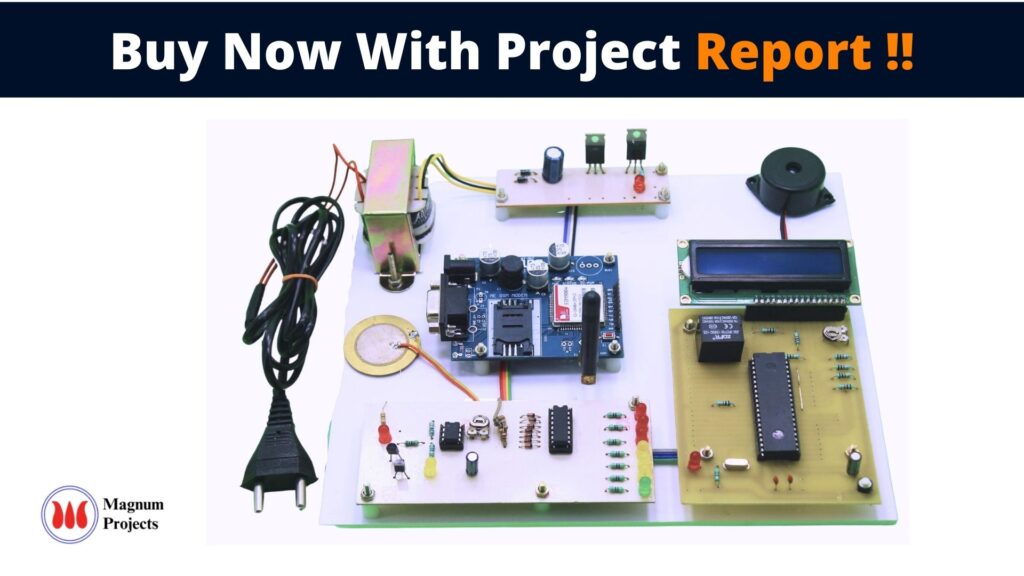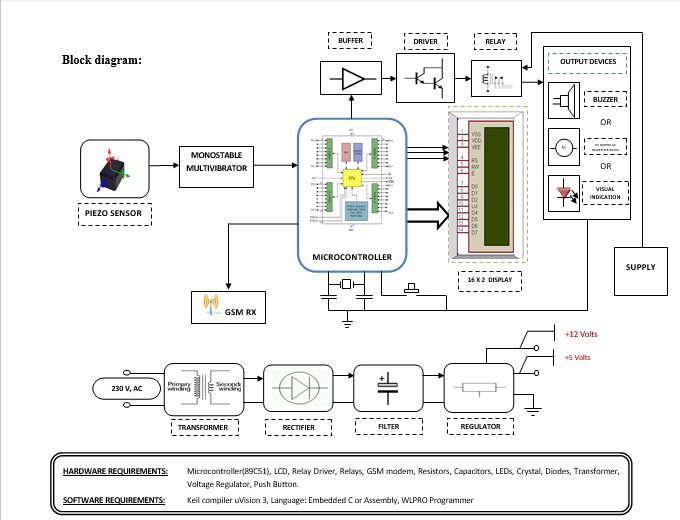Table of Contents
Introduction:

An earthquake is a sudden vibration or trembling in the Earth. Earthquake motion is caused by the quick release of stored potential energy into the kinetic energy of motion. Most earthquakes are produced along faults, tectonic plate boundary zones, or along the mid-oceanic ridges. In these areas, large masses of rock that are moving past each other can become locked due to friction. Friction is overcome when the accumulating stress has enough force to cause a sudden slippage of the rock masses. The magnitude of the shock wave released into the surrounding rocks is controlled by the quantity of stress built up because of friction, the distance the rock moved when the slippage occurred, and the ability of the rock to transmit the energy contained in the seismic waves. Sometime after the main shock wave, aftershocks can occur because of the continued release of frictional stress. Most aftershocks are smaller than the main earthquake, but they can still cause considerable damage to already weakened natural and human-constructed features. At the Earth’s surface, earthquakes manifest themselves by shaking and sometimes displacing the ground. When a large earthquake epicenter is located offshore, the seabed sometimes suffers sufficient displacement to cause a tsunami. The shaking in earthquakes can also trigger landslides and occasionally volcanic activity. In its most generic sense, the word earthquake is used to describe any seismic event whether a natural phenomenon or an event caused by humans — that generates seismic waves. Earthquakes are caused mostly by the rupture of geological faults, but also by volcanic activity, landslides, mine blasts, and nuclear experiments. An earthquake’s point of initial rupture is called its focus or hypocenter. The term epicenter refers to the point at ground level directly above the hypocenter.

Block diagram explanation :
Power supply unit:
This section needs two voltages viz., +12 V & +5 V, as working voltages. Hence specially designed power supply is constructed to get regulated power supplies.
GSM:
GSM Shield (SIM 900a): The SIM900 which is a complete Quad-band GSM/GPRS solution comes in an SMT module that can be embedded in customer applications. Featuring an industry-standard interface, the SIM900 delivers GSM/GPRS 850/900/1800/1900MHz performance for Data, voice, SMS, and Fax in a small form factor and with low power consumption. SIM900 can fit almost all the space requirements in the M2M application with dimensions of 24mm x 24mm x 3 mm. SIM900 is designed with a very powerful single-chip processor integrating AMR926EJ-S core. Quad-band GSM/GPRS module with a size of 24mmx24mmx3mm, SMT type suit for customer application, An embedded Powerful TCP/IP protocol stack Based upon a mature and field-proven platform, backed up by our support service, from definition to design and production.
NOTE: Modem may change.
Buffers:
Buffers do not affect the logical state of a digital signal (i.e. a logic 1 input results in a logic 1 output whereas logic 0 input results in a logic 0 output). Buffers are normally used to provide extra current drive at the output but can also be used to regularize the logic present at an interface.
Drivers:
This section is used to drive the relay where the output is the complement of input which is applied to the drive but the current will be amplified.
Relays:
It is an electromagnetic device that is used to drive the load connected across the relay and the o/p of the relay can be connected to the controller or load for further processing.
Indicator:
This stage provides a visual indication of which relay is actuated and deactivated, by glowing respective LED or Buzzer.
Piezo sensor:
A piezoelectric sensor is a device that uses the piezoelectric effect, to measure changes in pressure, acceleration, strain, or force by converting them to an electrical charge. The prefix piezo- is Greek for ‘press’ or ‘squeeze’.
Microcontroller:
The 89C51 Microcontroller is the heart of this project. It is the chip that processes the User Data and executes the same. The software inherited in this chip manipulates the data and sends the result for visual display.
The general definition of a microcontroller is a single-chip computer, which refers to the fact that they contain all of the functional sections (cpu, ram, rom, i/o, ports, and timers) of a traditionally defined computer on a single integrated circuit. Some experts even describe them as special-purpose computers with several qualifying distinctions that separate them from other computers.
Features Of Microcontroller :
- 8K Bytes of In-System Reprogrammable Flash Memory.
- Endurance: 1,000 Write/Erase Cycles.
- Fully Static Operation: 0 Hz to 24 MHz.
- Three-level Program Memory Lock.
- 256 x 8-bit Internal RAM.
- 32 Programmable I/O Lines.
- Three 16-bit Timers/Counters.
Methodology:
The above block diagram shows the setup of the Earth Quake Finder System using GSM & Microcontroller. Our project is a sensing element which is a piezoelectric transducer, which works on the basic principle of the piezoelectric effect. As we know that the earth’s vibrations due to earthquakes are a physical quantity that is to be converted into electrical ones. For this purpose, we are using piezoelectric crystal since it is very sensitive to vibration. The output of the piezoelectric transducer is fed to the Microcontroller through a Monostable multivibrator. Then Microcontroller will process and generates the output fed to the output devices that time buzzer will get turned ON for an alert. At the same time, another output of the controller is fed to the GSM & sends a message to the base via the GSM network.
Advantages:
- Our system has the potential to add vital seconds to earthquake warnings, giving
extra time for action to be taken.
- Early warning systems can play an important role in reducing the negative impact of these catastrophic events on densely populated areas and in mitigating the damage to strategic structures and lifelines.
- Provides information to support decision-making for the rapid response to emergency
Management services.
- It can activate the control system to protect crucial structures.
- It requires less power supply.
- Portable circuit easy to handle.
Disadvantages:
- Damage to the sensor cannot be detected.
- If GSM fails to catch the network then failure of controlling the devices.
Applications:
- Automotive industry.
- Used for quality assurance, process control, and for research and development in many industries.
- Medical.
- Aerospace.
- Nuclear instrumentation




